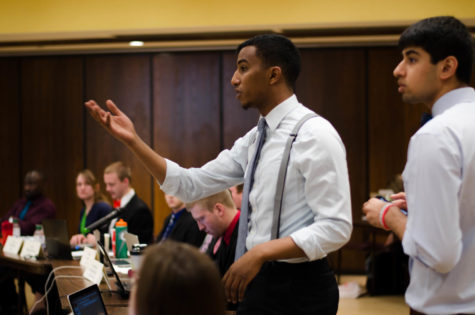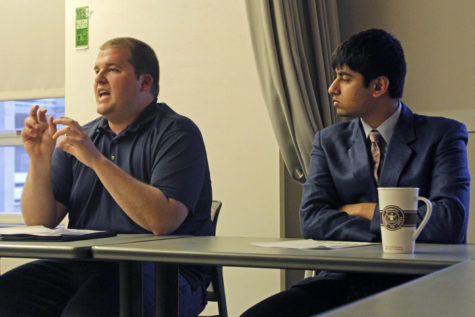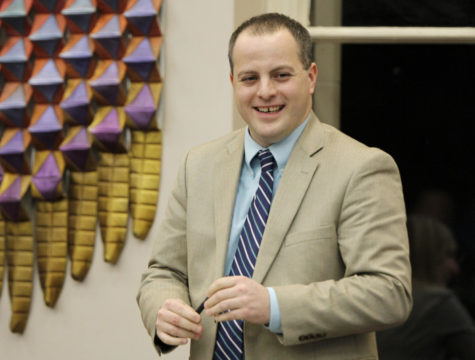U of I fee system proposal protested by GSB
October 20, 1999
The Board of Regents, State of Iowa will vote this week whether to approve the separation of the University of Iowa’s student fees from the general tuition cost — an action that, if approved, could result in a 2001-2002 tuition increase as high as 8 percent at Iowa State.
University of Northern Iowa representatives will argue at the Wednesday and Thursday meetings against the U of I student fees structure change.
Government of the Student Body members are also against the proposal, while U of I Student Government leaders will encourage the regents to approve it.
GSB representatives will not lobby the regents directly because they already spoke about the issue at the board’s September meeting.
Currently, all ISU, U of I and UNI students pay mandatory student fees, which are included as a portion of tuition as a whole. The new proposal would separate student fees from general tuition at U of I and add them on to the university bill to be paid, such as computer and lab fees, said Matt Craft, GSB president.
However, the amount appropriated from tuition for student fees would not be deducted from the general tuition amount and made a separate fee, he said.
Students still would pay the same amount of general tuition as the other two regent universities, and the portion once designated for student fees will go into the general fund. Student fees would be paid on top of that.
Separating tuition and fees would result in a total tuition increase of 6 to 7 percent, said Chris Linn, UISG executive representative.
The results of an online referendum in which 1,374 U of I students voted indicated that 50 percent of voters support the separation of tuition and fees.
“Students support the concept of separation for two reasons,” Linn said. “The first is that it will make the university more accountable for the money they spend.
“Secondly, more tuition money will be going just for academic needs,” he said, because the money formerly appropriated for student fees would go into the university’s general fund. About $3.8 million will be generated in two years for academic purposes, he said.
However, ISU’s GSB representatives do not support U of I’s proposed fee structure because, if the Board of Regents passes this proposal, ISU President Martin Jischke has indicated that a similar structure will come to ISU for the 2001-2002 school year, Craft said.
“I see no reason why the Board of Regents would approve it for one university and not the other,” he said. Because student fees would be separate, they may not increase every year and couldn’t keep up with the rising costs of these services, Craft said. Students at each university would have to ask the regents for fees increases, just as students have to ask for increases in computer fees.
“If the proposal passes, students will be looking at a big tuition increase for the next year, and funding for the these services will be in jeopardy,” he said.
Craft is worried that candidates running for student government positions will promise to not raise the fees if they get elected, even if the costs of services increase over time.
“I don’t think the possibility of being able to see where the tuition money is going is worth jeopardizing the funding for these services,” he said.
Although the passage of the new fee structure for U of I does not ensure that ISU’s structure will change, Craft said it is better to argue against it now in order to keep it from being instituted at the regent universities rather than convincing the regents to make U of I the only state school with the system.
“It is important that we deal with it this year because it will be too late next year,” he said. “Next year when we’re discussing tuition, there’s a good chance there will be a tuition and fee increase proposed around 7 or 8 percent [for ISU].”









